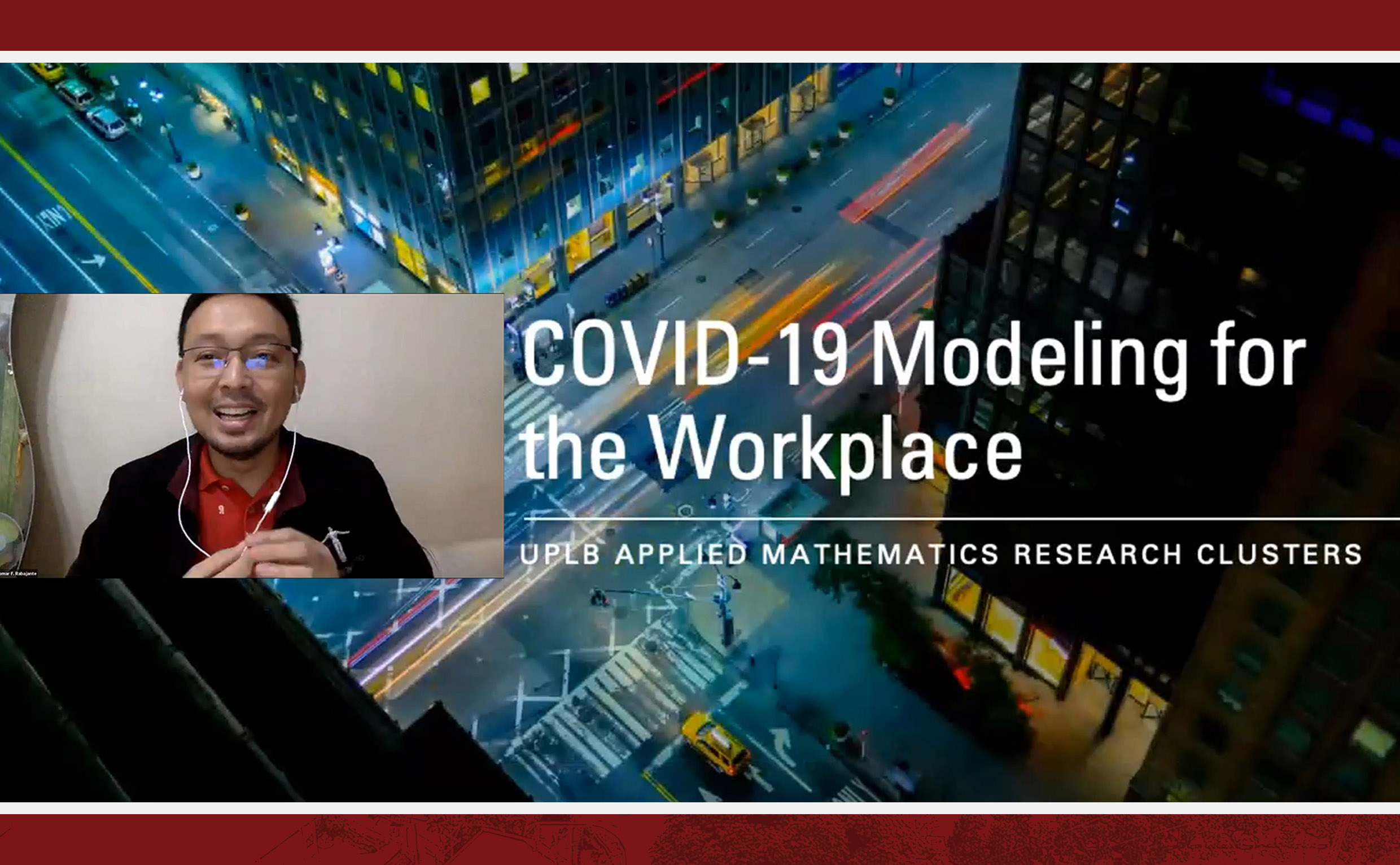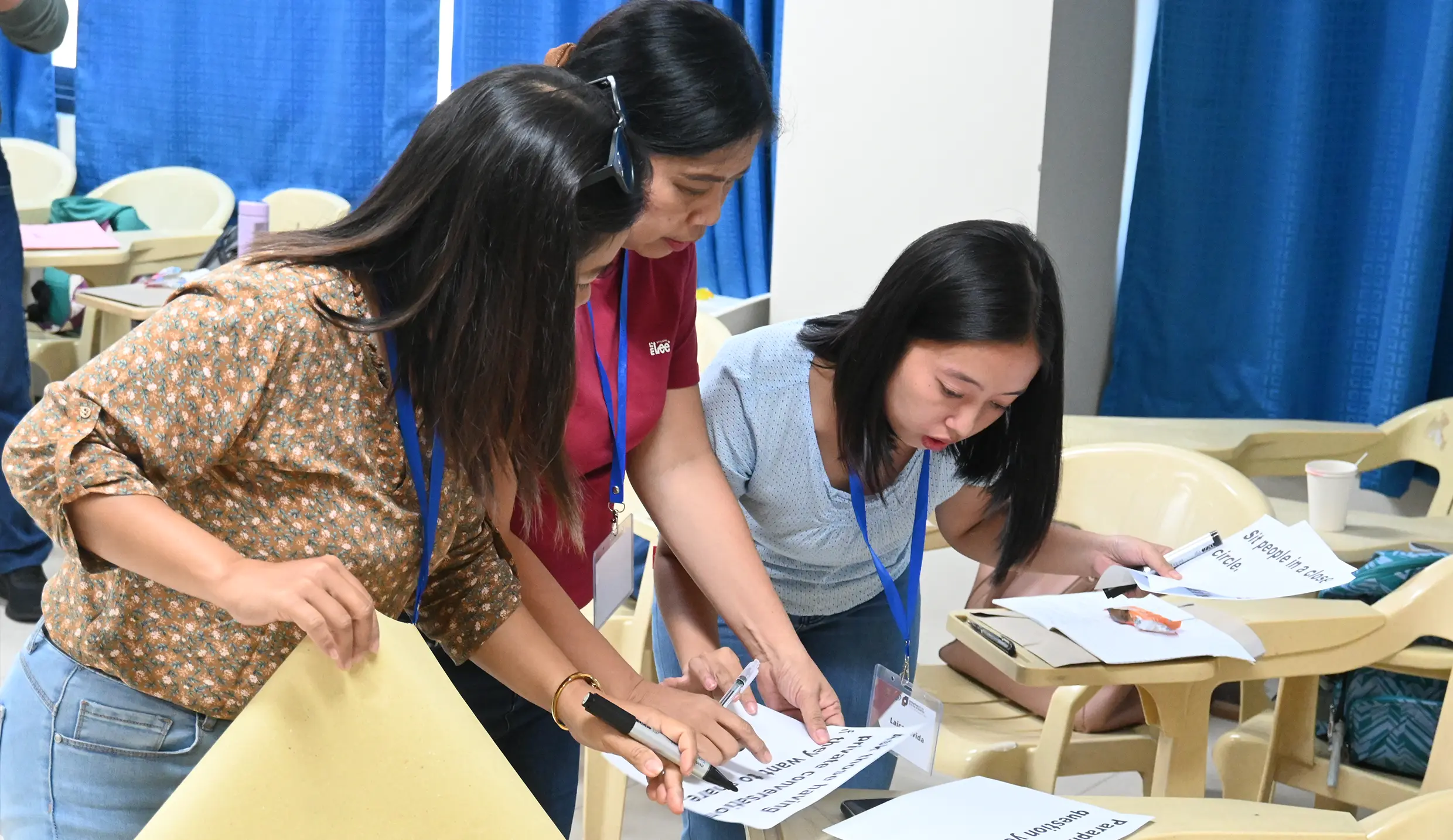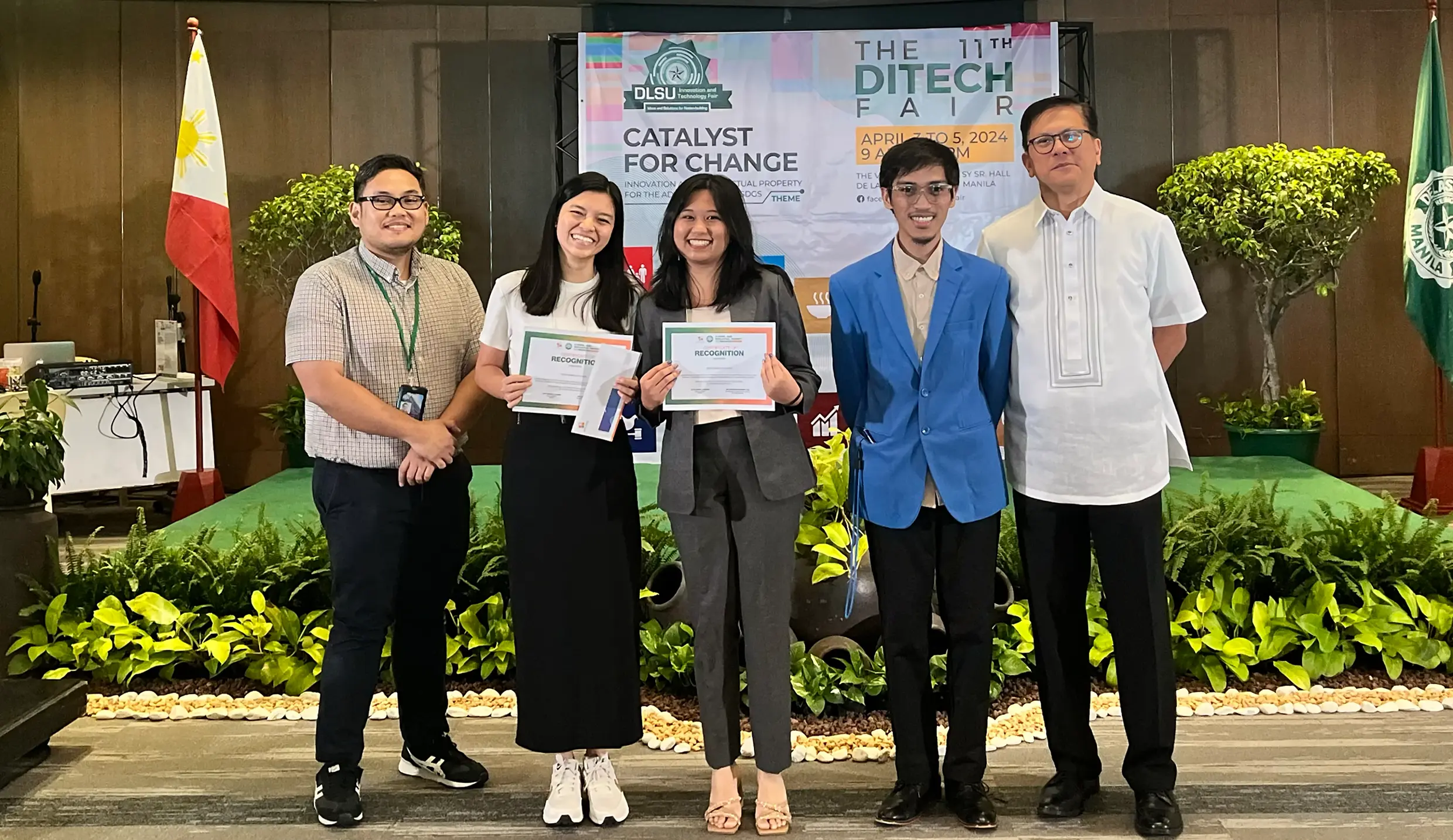
How risky are your job and workplace in this time of COVID-19 pandemic?
You can calculate this using job and workplace risk calculators developed by UPLB biomathematicians based at the Institute of Mathematical Sciences and Physics (IMSP) of the College of Arts and Sciences.
The two modeling tools called the Job Risk Calculator and the Workplace Outbreak Simulator, provide answers to these crucial questions in just a few clicks. These two platforms are free and can be accessed online.
Dr. Jomar F. Rabajante, one of the biomathematicians under the UPLB Applied Mathematics Research Clusters that developed the said online platforms, explained and demonstrated their use during the Living Dangerously Webinar Series of the School of Environmental Science and Management (SESAM) held via Zoom on July 2.
According to Dr. Rabajante, a UP Scientist who teaches at the IMSP, the Job Risk Calculator determines the COVID-19 infection risk of workers based on the nature of their job.
The Job Risk Calculator has two types: first is the Freeloaded Calculator. By selecting one’s specific job based on the calculator’s listing of almost 1,000 jobs, one can see the overall risk score that is computed for it.
The second Job Risk Calculator, called the Open Calculator, could be used by those who could not find their jobs in the first calculator.
In the Open Calculator, users are required to enter four job data – number of encounters per hour, work shift duration, crowd density, and level of protection – to find out the overall risk score of their job.
The Workplace Outbreak Simulator, Dr. Rabajante said, provides the outbreak threshold, basic reproduction number, and outbreak projections in the workplace.
Users of this Microsoft Excel-based tool would have to enter a few workplace data pertaining to the number of employees, number of offices and floors, physical distancing, and protection measures before they are presented with a decision guide.
This decision guide shows the probability of the occurrence of COVID-19 outbreak in the workplace depending on the number of persons who will be reporting physically. It also indicates the number of persons that a virus carrier may infect in the workplace and the multiplication of infection in given periods of time.
Dr. Rabajante said that these decision tools can help workers, companies, and human resource departments to look at COVID-19 crisis in terms of risk-based assessment and control.
“We need to look at simulations in terms of what risks are posed, and these should not be given blanket solutions,” emphasized Dr. Rabajante, reminding that each company and community where one is working poses different levels of risk, and therefore requires different kinds of decisions and actions.
Present during the webinar were Chancellor Fernando C. Sanchez, Jr. and SESAM Dean Decibel Faustino-Eslava, who both recognized the importance of the said simulation models in making decisions in the workplace.
Chancellor Sanchez had said at a Zoom meeting of the Executive Committee to the University Council on May 29 that the job and workplace risk calculators shall be rolled out for use in UPLB.
Prior to the explosion of COVID-19 in the country, Dr. Rabajante headlined the SESAM seminar series’ first leg in February 2020, where he presented a mathematical model to prevent the spread of COVID-19 in large gatherings. (Mark Jayson E. Gloria)








